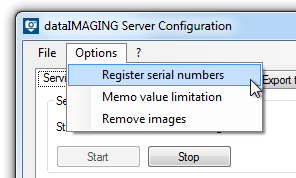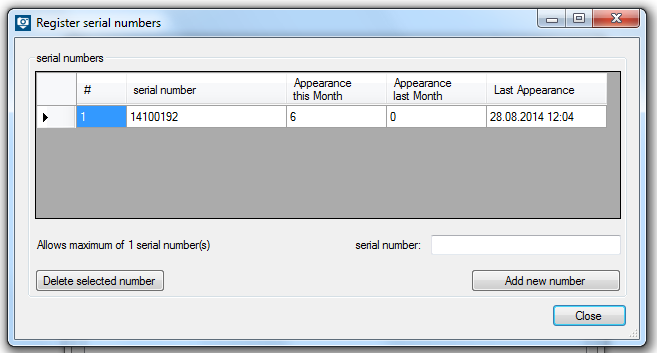ExifExctractor Server has the feature to register serial numbers. The administrator has the possibility to activate or deactivate cameras. The settings have an impact on the following image processing events.
The maximum number of serials which are allowed to register is depending on the integrated license. ExifExtractor identifies the camera via the serial number saved in the exif-header.
Beside the manual input and administration of the activated serial numbers with the program surface it is possible and recommended to add serial numbers automatically to the serial-database. The camera's number will be added to the list while processing its images.
If the license-controlled limit of registration has been achieved, photos of unregistered cameras won't be processed regularly anymore. Instead, those pictures will be copied into the output directory and watermarked. The renaming will be performed according to the settings which were set before in dataIMAGING Server. Die watermarked copy will be used for the creation of potential pdf-reports. The original file will be moved to the folder unprocessed_originals in the output directory.
The manual administration of the serial-database can be selected by using the menu entry Register serial numbers.

The windows that opens next shows a list of the activated serial numbers up to now and their activity of usage.
Furthermore, the maximum number of serials which are allowed to register can be reviewed here.

The field serial number allows You to add more serials. The activation can be completed by pressing the button Add new number.
To deactivate a camera, respectively deleting the serial number, the particular row has to be selected (by clicking previous to the first cell). The button Delete selected number deletes the selected entry from the database. In place of it, another camera can be registered then.
After making the respective settings the window can be closed. The saving and restart of the service applies the configuration.